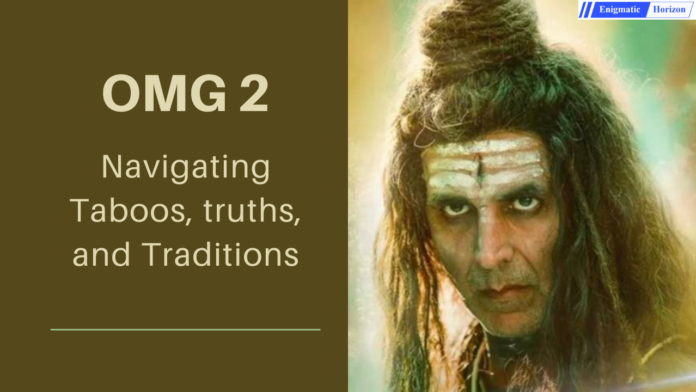Dalip Rawat
The audience is both curious and surprised about the film OMG 2. But the thing to think about is what the audience should learn from what is shown in the film. Has the movie’s story given them the right information, or has it been manipulated in the name of scripture? The film explores the delicate subject of sex education for schoolchildren. This leads us to the next question: whether OMG 2 has been successful in providing accurate and complete information on this topic. Does it accurately depict our ancient scriptures, which include the Kamasutra and the Geeta? Let us explore the movie’s insights with you.
What is the concept of the movie?
In the framework of Indian culture and society, the movie OMG 2 dives into the complicated and taboo topic of masturbation and how it is linked to a lack of adequate sex education for children. It tries to deal with the stigma attached to this natural behaviour and the uncertainty many teens have about its appropriateness. The film tries to portray masturbation as not an intrinsically immoral act but rather a natural phenomenon as a passing phase of adolescence. A clear and thorough knowledge of this subject is, however, not given by the film.
Potential adverse effects: important details are omitted from the movie
The film tends to miss out on a lot of the finer subtleties surrounding the topic. For example, it fails to touch upon the fact that both boys and girls may experience a variety of adverse side effects if they engage in excessive or compulsive masturbative behaviour, such as deterioration in semen quality, lower decision-making skills, fixation, and other abnormal behaviours. Teenagers, in particular, must find a healthy balance in their lives and refrain from letting indulgence in such acts take precedence over other interests.
What do our culture and ancient knowledge say about it?
Considering allusions from the Geeta, the Kamasutra, and other ancient texts like the Shastras, the movie’s depiction appears dubious. While providing important insights into human nature and interpersonal connections, these writings do not overtly support or object to any of these acts. They place more emphasis on living a balanced and orderly existence.
A person’s life is divided into four stages, in accordance with conventional wisdom in India: Bhramcharya, Grihastha, Vanaprastha, and Sannyasa. Bhramcharya refers to celibacy and education from ages 1 to 25, Grihastha explores family life and career from ages 25 to 50, Vanaprastha means retirement and spiritual pursuits from ages 50 to 75, and Sannyasa goes about renunciation from ages 75 to 100. These phases naturally match different joys and obligations with the relevant life stages.
Ending note: The film’s unclear implications
“OMG 2” poses significant queries regarding sexuality, self-discovery, and societal perspectives. While making an effort to go against social conventions and encourage constructive conversations, it falls short of offering a thorough and impartial viewpoint. The film’s ambiguous messages about the theme and its distortion of conventional wisdom may mislead impressive viewers. The movie serves as a reminder that discussions about delicate subjects should be based on precise knowledge. It should be allied with honest communication and a thorough comprehension of cultural and historical circumstances. In order to make wise judgements regarding their own lives, viewers should approach this movie with an open mind and a critical perspective.
